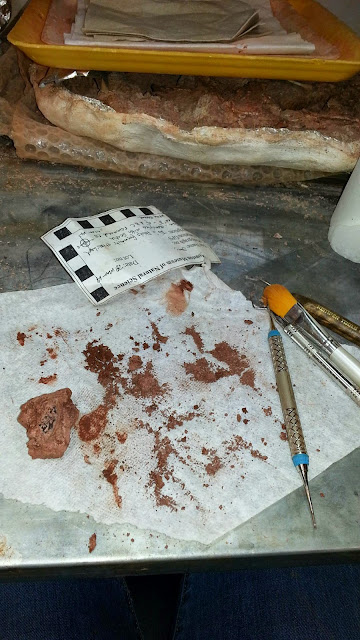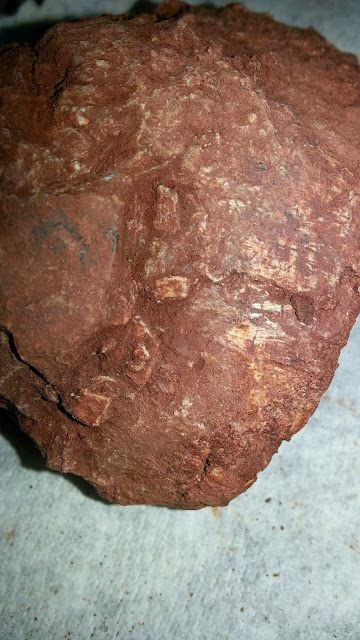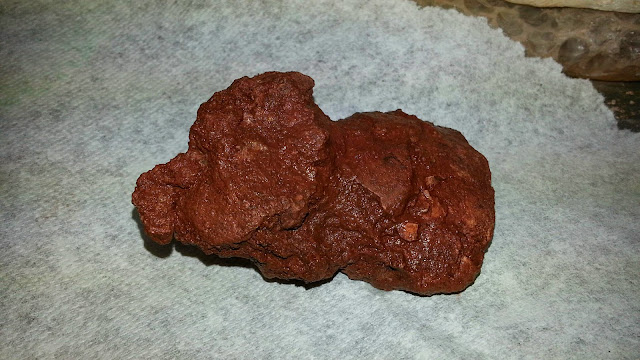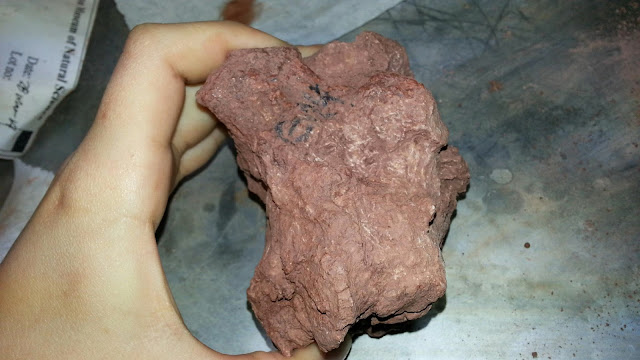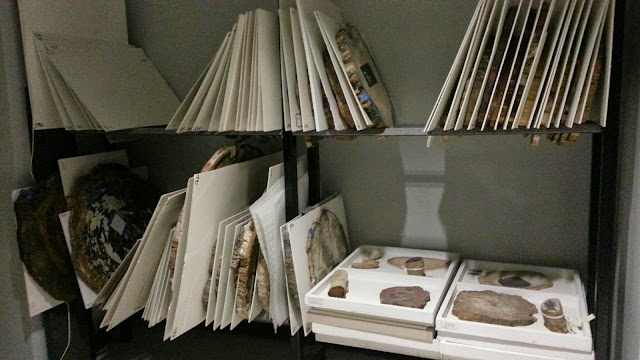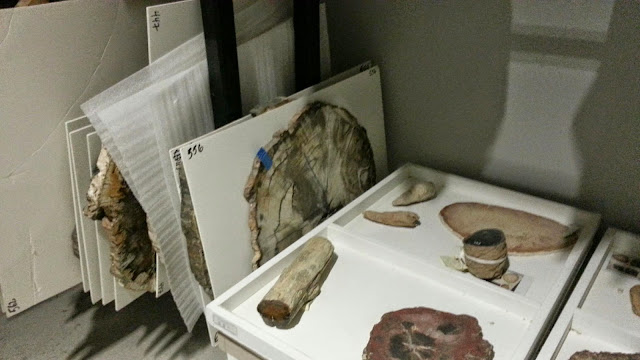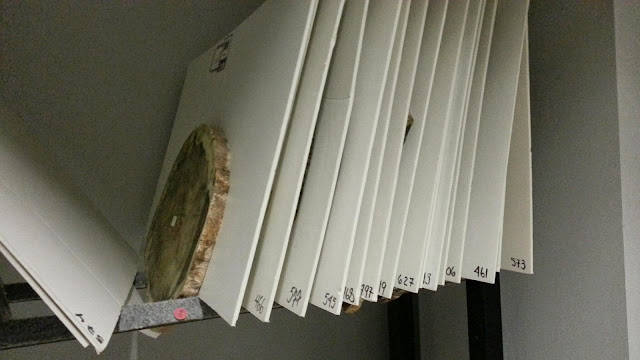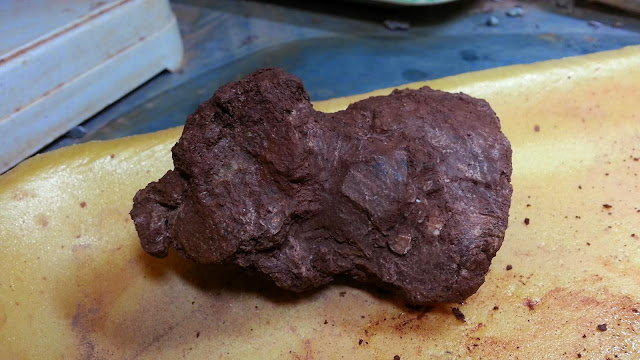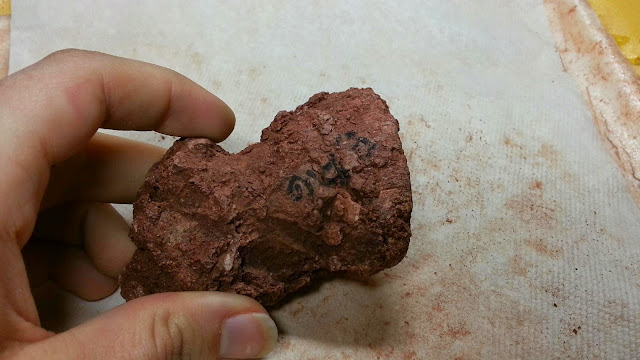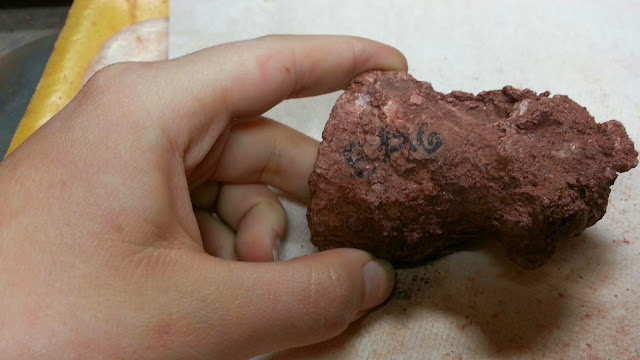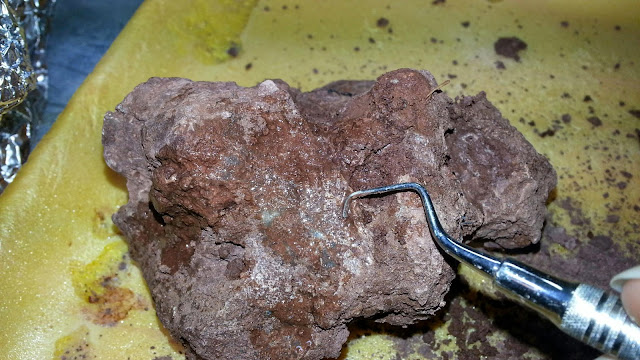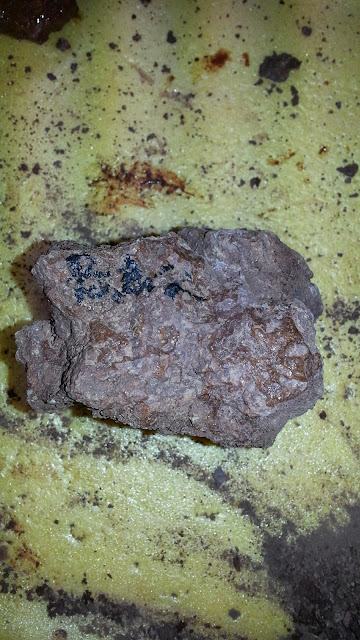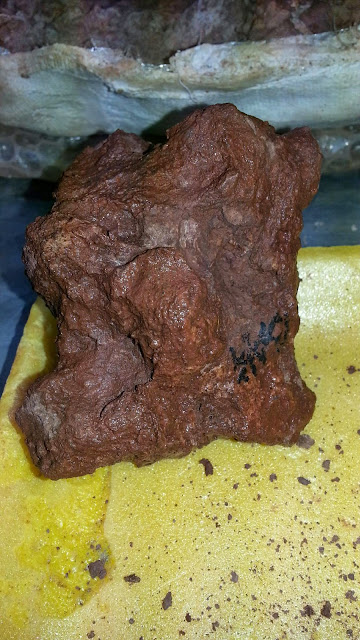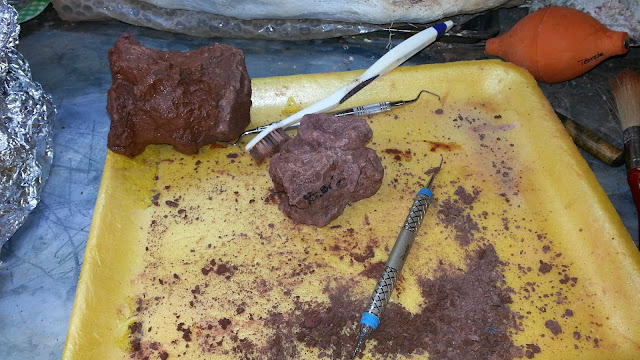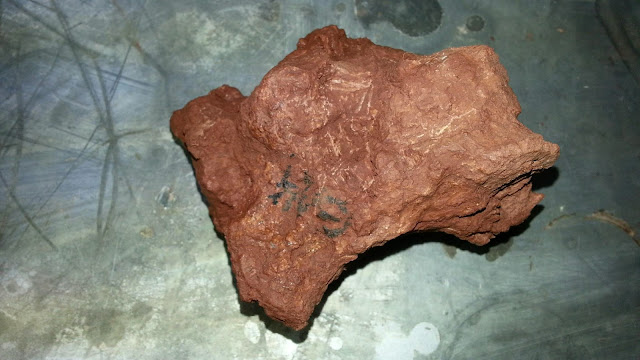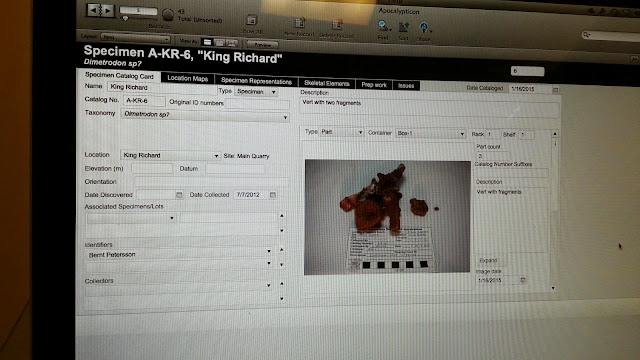Tuesday, February 24, 2015
Losing the Red
Sunday, February 15, 2015
The Petrified Wood Vault
Sunday, February 8, 2015
Vinegar, Some Big Bones, and a Database
This week I went to the museum once for 2 1/4 hours. David was out of town, and I needed to talk to him about trimming the plaster of my large jacket, so I decided I would work on my small jacket instead. I had forgotten that the small jacket was completely done except for one small part because of how many bones were on top of the dirt there. Originally I thought there were only a couple bones so I could just label and remove them, but when I saw how many small pieces of bone there were I decided against that. So when David gets back I'll need his help cutting plaster and photographing the small jacket so I can remove those bones and then finish removing dirt.
We brought back a couple sets of bones wrapped in aluminum foil when we came back from Seymour last year, and I realized last week that they never got cleaned. So I decided to work on those after the jackets were a bust. The reason we didn't make a jacket around these bones was because they'd already moved around so much in the field that we didn't really need to preserve their location. Instead we drew and photographed them, labeled them with Sharpie because the caliche will be removed later, and collected them. I got to work on two of the bones while I was in the lab this last week, and neither are done being cleaned. I started by spraying the first bone down with water and using a dentil pick to remove large amount of dirt. I followed that by scrubbing down the bone with vinegar and a toothbrush. While I let that sit for 10-15 minutes I started doing the same thing on a second bone. After 10-15 minutes I picked more dirt off of the first bone with a dental pick and then scrubbed it down with water and a toothbrush to get the vinegar off. I ended up having to dry the bone by hand because that's when I had to leave, but I'll work more on this set of bones next week.
Check out pictures of the cleaning process below!
I also got to talk to one of the other volunteers about the database he's spearheading to enter all of our fossils into; that's a picture of it at the very bottom.
